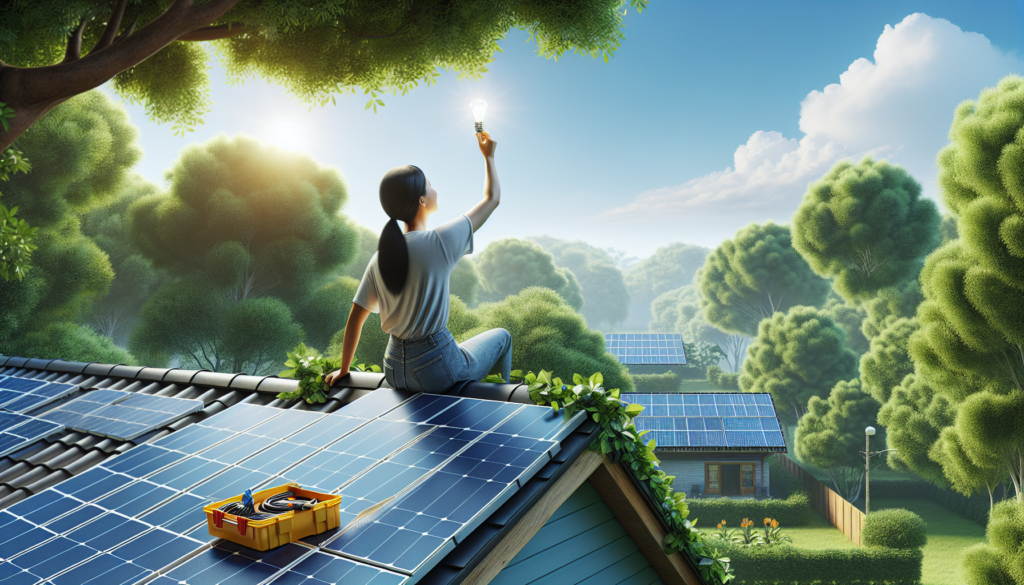
As energy costs continue to rise, many people are looking for ways to reduce their electricity bills and achieve energy independence. Building a DIY home energy system is a popular solution, offering the chance to take control of your energy use. With a bit of effort, you can create a system that generates free electricity and lessens your reliance on the grid.
A DIY home energy system is essentially a setup that allows you to produce your own power using renewable sources. Many homeowners use solar panels or wind turbines to harness energy from the sun and wind. Such systems can be small-scale, just enough to offset some energy use, or large enough to power an entire home.
An interesting fact in the world of DIY energy is that the U.S. Energy Information Administration projects renewable energy sources like solar and wind to account for a growing share of electricity generation. Between 2020 and 2023, solar power alone has seen significant adoption in residential areas, often due to its decreasing installation costs and increasing efficiency.
So, why would you want to build a DIY home energy system? First, self-generated energy can significantly cut your electricity bills. Producing your own power reduces reliance on the grid and protects against rising energy costs and power outages. Moreover, many people choose DIY systems for their environmental benefits. By using renewable energy, you can decrease your carbon footprint and help combat climate change. Plus, there’s the satisfaction of innovation and independence that comes with crafting a system to meet your home’s unique needs.
However, creating an efficient and reliable home energy system is not without challenges. Many who venture into the world of DIY energy encounter issues such as high initial costs, technical know-how, and the need for regular maintenance. There’s also the complexity of integrating generated power with existing electrical systems, not to mention variances in local regulations and standards for such setups.
Traditionally, most DIY energy systems have centered around solar panels and wind turbines—popular methods for capturing renewable energy. For instance, a solar setup typically involves installing panels that convert sunlight to electricity; a recent attempt showed a system producing 7.7 kilowatt-hours over seven days, though it fell short of significant savings, likely due to technical issues with microinverters. Wind turbines, while effective in some areas, require specific weather conditions and space for optimal operation.
Interestingly, one innovative way that’s gaining attention is the “spinning principle,” spearheaded by enthusiasts like Ryan Taylor. This method focuses on harnessing energy through mechanical innovation instead of the traditional solar or wind approach. Here’s a detailed guide on building a system using this principle:
1. Select the Right Equipment: You will need components that convert mechanical motion into electrical energy, like motor units or specialized generators.
2. Set Up a Base Structure: Similar to setting up a compact generator with a series of wheels or rotors. You might use sturdy shelves, comparable to those you’d find in a kitchen, to house your equipment.
3. Assembly: Follow a sequence of connecting parts that rely on a spinning mechanism, generating electricity through consistent rotation powered by natural forces or manual input.
4. Integration with Home System: Connect your mini power station to the grid with proper inverters that handle DC to AC conversion efficiently. Ensure you have safety measures like circuit breakers in place.
5. Testing and Optimization: Measure the output, ensuring the setup operates smoothly. You might need to tweak motor rotations or change the positioning to maximize efficiency.
To recap, a DIY home energy system is a fantastic way to reduce energy costs and attain some independence from the traditional power grid. Whether using traditional solar and wind methods or innovative techniques like Ryan Taylor’s spinning principle, these systems provide both economic and environmental benefits. As with any project, careful planning and understanding the ins and outs ensure long-term success. Thanks for exploring this energy-saving adventure!